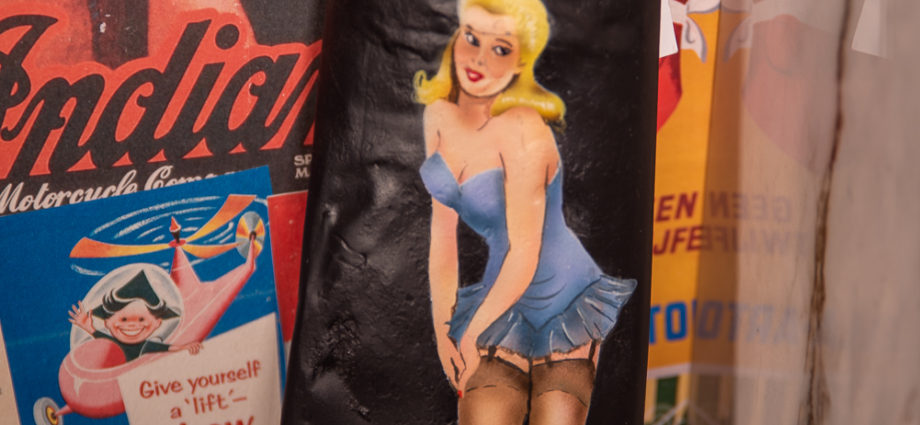Contemporary research demonstrates that bomber crews, who suffered high casualty rates during World War II, often developed strong bonds with the planes they were flying, and affectionately decorated them with nose art. It was also believed by the flight crews that the nose art was bringing luck to the planes.
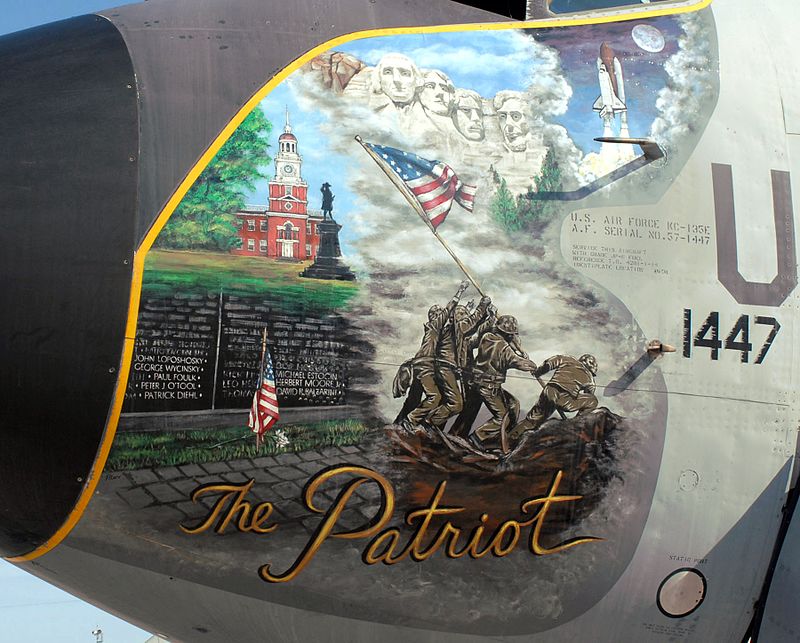
Typically, the guys who did the painting were the base sign painters. The most Prolific were; Cpl. Tony Starcer (MEMPHIS BELLE fame), Don Allen (4th FG), Phil Brinkman (486th BG), Randall Spranger (B-29s) Hal Olsen (PB4Ys) and Al Merkling (B-24/F7s).
Nose art is largely a military tradition, but civilian airliners operated by the Virgin Group feature “Virgin Girls” on the nose as part of their livery. In a broad sense, the tail art of several airlines such as the Eskimo of Alaska Airlines can be called “nose art”, as are the tail markings of present-day U.S. Navy squadrons. There were exceptions, including the VIII Bomber Command, 301st Bomb Group B-17F “Whizzer”, which had its girl-riding-a-bomb on the dorsal fin.

Beginnings
Placing personalized decorations on fighting aircraft began with Italian and German pilots. The first recorded example was a sea monster painted on an Italian flying boat in 1913. This was followed by the popular practice of painting a mouth beneath the propeller’s spinner begun by German pilots in World War I. What is perhaps the most famous of all nose art, the shark-face insignia later made famous by the First American Volunteer Group (AVG) Flying Tigers, first appeared in World War I on a British Sopwith Dolphin and a German Roland C.II, though often with an effect more comical than menacing.

Source material for American nose art was varied, ranging from pinups such as Rita Hayworth and Betty Grable and cartoon characters such as Donald Duck, Bugs Bunny, and Popeye to patriotic characters (Yankee Doodle) and fictional heroes (Sam Spade). Lucky symbols such as dice and playing cards also inspired nose art, along with references to mortality such as the Grim Reaper. Cartoons and pinups were most popular among American artists, but other works included animals, nicknames, hometowns, and popular song and movie titles. Some nose art and slogans expressed contempt of the enemy, especially of their leaders.
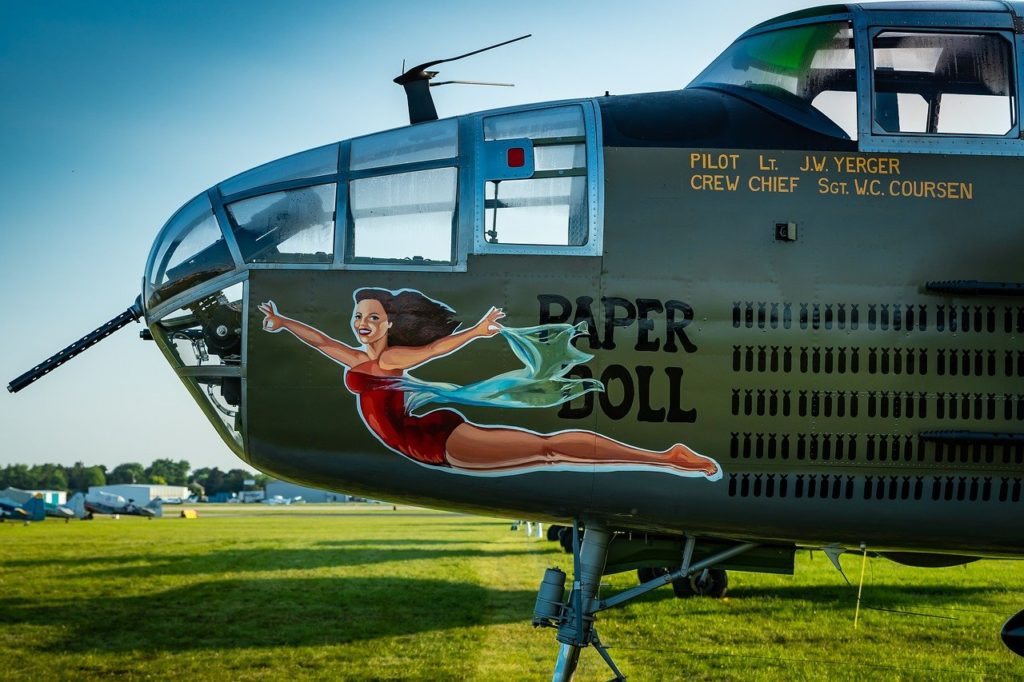
The farther the planes and crew were from headquarters or from the public eye, the racier the art tended to be. For instance, nudity was more common in nose art on aircraft in the Pacific than on aircraft in Europe.
The last one i have for sale is from a Halifax Bomber through WW2.
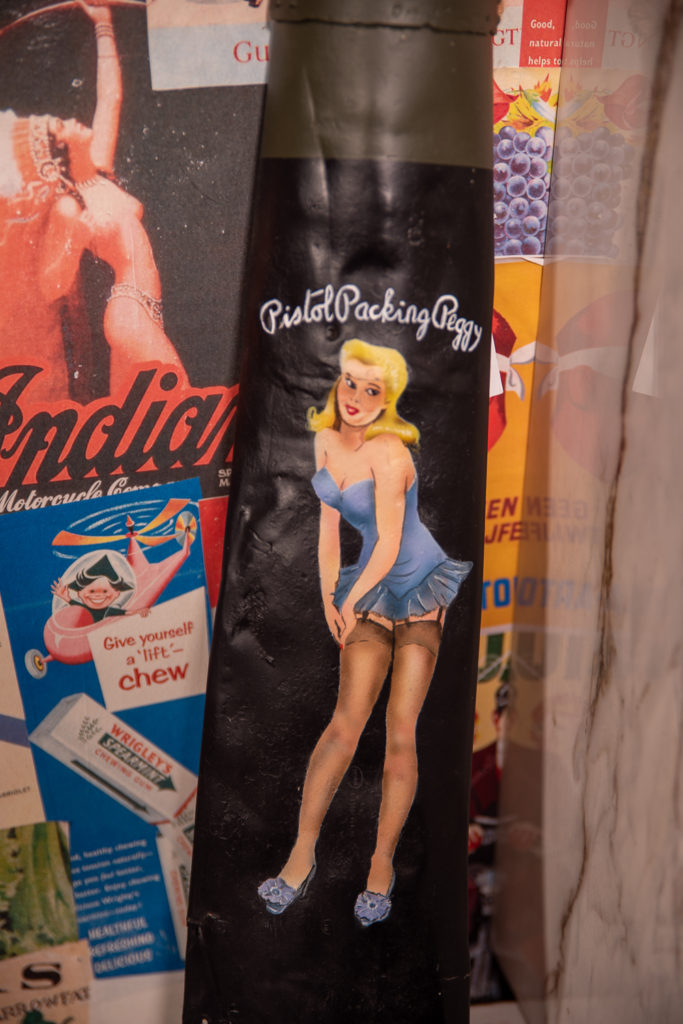
On an original piece of airframe from a Halifax bomber with Pistol Packing Peggy Artwork.
We are a small team of Antique and Retro Fanatics. We have a store at the Freemens Common Antique Centre in Leicester and an online presence on ebay and Etsy.
Another Pin Up on a vintage Jerry Can.
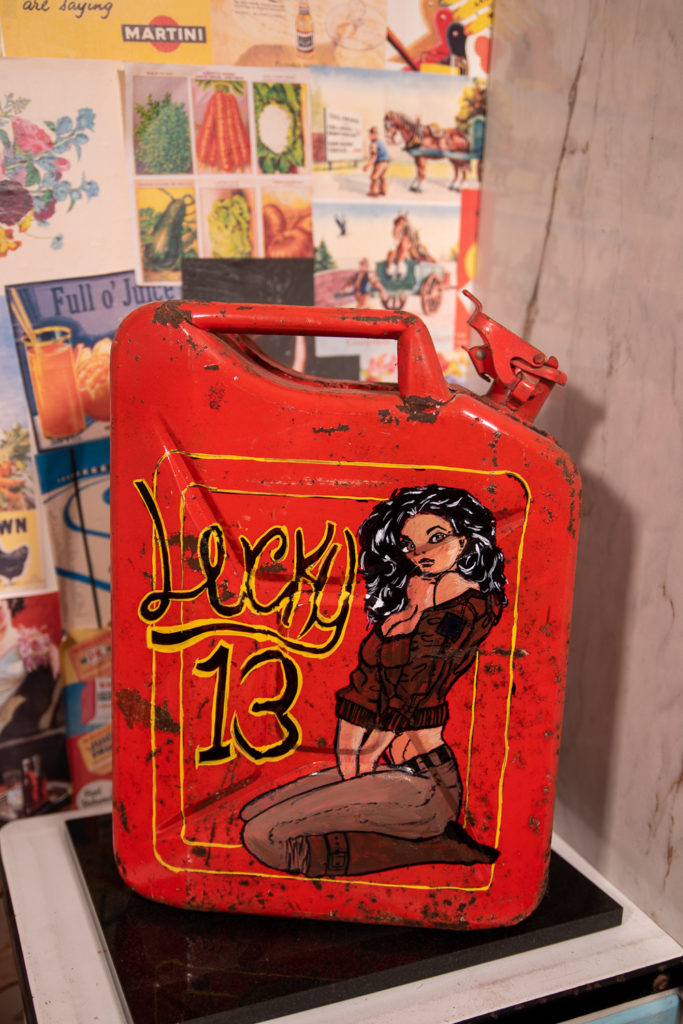
We love history and enjoy making the best of the items that come through wildcard, whether it be restoring, cleaning, or just getting it to a customer who will love them.
